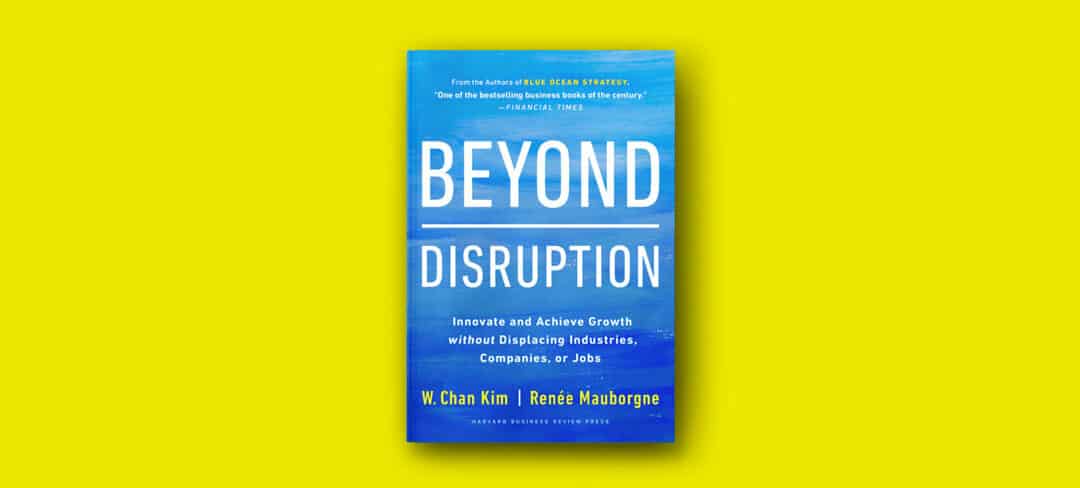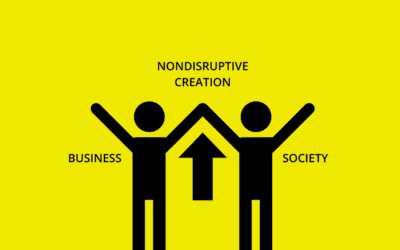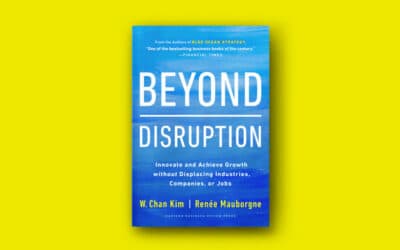Written by Michael Olenick, Institute Executive Fellow at the INSEAD Blue Ocean Strategy Institute.
Completing their transformation from red ocean to now dead ocean, CNN+, the $5.99/month streaming offering from CNN, reportedly drew about 10,000 users per day. If CNN+ was a YouTube channel, it’d be barely noticed. CNN+ launched on March 29, 2022. Less than a month later, on April 19 2022, parent company Warner Bros. Discovery, Inc. fired the CFO and then announced the service was shuttering on April 30. CNN spent $300 million for 32 days of CNN+, $9,375,000 per day.
What went wrong?
When Ted Turner launched CNN, it was what Chan Kim and Renée Mauborgne call a classic blue ocean strategic move, making the then three-channel broadcast news oligopoly – NBC, CBS, ABC – largely irrelevant. When CNN was introduced, it offered 24-7 real-time news without star broadcasters. Turner’s upstart 24-hour cable news channel defied the professionals by offering more value at lower cost with their nonstop news reporting showing rather than explaining. In 1991, while far larger networks were preparing professional “news and commentary” as they called it, CNN’s Peter Arnett and his team managed to call in reports from Baghdad during the US invasion. Rather than gently accepting it as a necessity, Arnett always indicated when his reports were censored. The terror attacks of 9/11 cemented the always-on network as the place to go for breaking news.
After years of smooth sailing in their blue ocean, things started changing at CNN.
Over time, CNN professionalized spending ever more money to produce ever less visual footage and more talking heads – who oftentimes interviewed other talking heads – for an ever-shrinking audience. On-scene news reporting, with visuals showing what happened, took second place to pundits, who were oftentimes reporters interviewing other reporters. Quality slipped. Wikipedia has an entire separate page entitled “CNN controversies.” There’s a clear pattern where the errors begin to increase in volume and scope especially after 2015 when it became significantly worse over time.
After years of smooth sailing in their blue ocean, things started changing at CNN.
Scandals about objectivity erupted at the embattled news network. CNN’s competence and reliability to report accurately were increasingly called into question. High school student Nicholas Sandmann was at a Washington DC for a political rally when CNN showed a video making it appear he was sneering at and harassing a Native American man. Contextual video later showed it was instead Sandmann and his friends who were being harassed. CNN wrote a lengthy report about the error without apologizing. Another teen, University of Chicago freshman Christopher Phillips, asked CNN anchor Brian Stelter about CNN’s accuracy during a disinformation seminar at the University of Chicago citing multiple documented mistakes. “It’s too bad – time for lunch,” Stelter joked, then termed the teenager’s challenge as “a popular right-wing narrative,” entirely failing to address his examples.
Internally, the network had ethical struggles. CNN was forced to fire prime star anchor Chris Cuomo after finding he was secretly helping his brother, former New York Governor Andrew Cuomo, fight sexual harassment charges. At first, the network seemed to defend him, but he eventually left, followed not long after by CNN president Jeff Zucker, forced out after his own sexual imbroglio.
These problems took their toll leaving viewers predictably unimpressed and figuratively and literally tuning out unless there was breaking news, something CNN+ didn’t carry.
CNN+ was CNN’s strategy to compete against its larger rivals. And no expense was spared. Chris Wallace was poached from Fox News with a $9 million/year contract; Anderson Cooper was repurposed from his role as a famous talking head; and they even lured celebrity chef Alison Roman from the New York Times.
We’ve seen this type of ‘throw in the baby, the bathwater, and the plumbing’ before with Quibi, the short-video streaming service. Hollywood power player Jeffrey Katzenberg raised $1.6 billion to build the streaming service that almost immediately bombed. Like CNN+, the firm hired the very best writers, directors, actors, and screenwriters then failed miserably even while TikTok – which streams amateur short-form videos – succeeded spectacularly.
CNN+ was CNN’s strategy to compete against its larger rivals.
In business, money is like water: too little and you’ll die a slow and horrible death but too much and you’re at risk of drowning. Yet competitive theory encourages firms to overspend in the oftentimes false belief that value can be purchased, that more spending creates more value. While that belief may work well when marketing luxury goods that aren’t substantively different from their vastly lower-priced peers, it doesn’t do well when creating core strategy.
Value innovation, the bedrock of blue ocean strategy, rejects this value-cost trade-off. While sometimes more spending can create more value, the correlation isn’t always or even often the case and often the inverse is true. More spending can mask deeper problems with an offering, the cash papering over a lack of buyer interest. Reading articles or watching documentaries about some of the worst business bombs in history – We Bombed about WeWork or The Dropout about Theranos – it’s easy to see how excess capital paved over serious problems.
Value innovation, the bedrock of blue ocean strategy, rejects this value-cost trade-off.
It’s likely several of the CNN+ news shows will live on, probably via corporate parent Discovery’s streaming service, Discovery+. However, hundreds of no-name staffers, the people behind the cameras who left jobs to join the streaming upstart, are unemployed.
It will be interesting to see if CNN, the core offering, learns anything from this financial fiasco or if the firm continues to sink ever deeper in its red ocean ways. It’s unlikely CNN will be heading to the bankruptcy courts anytime soon but its relevance, on its current path, was torpedoed by blue ocean alternative streaming and independent media. Will CNN itself follow CNN+ from red to dead or will it value-innovate to reinvigorate and breathe some new blue ocean life into Turner’s original vision?
About the author
Michael Olenick is an Institute Executive Fellow at the INSEAD Blue Ocean Strategy Institute.
Photo by stevosdisposable on Unsplash

















